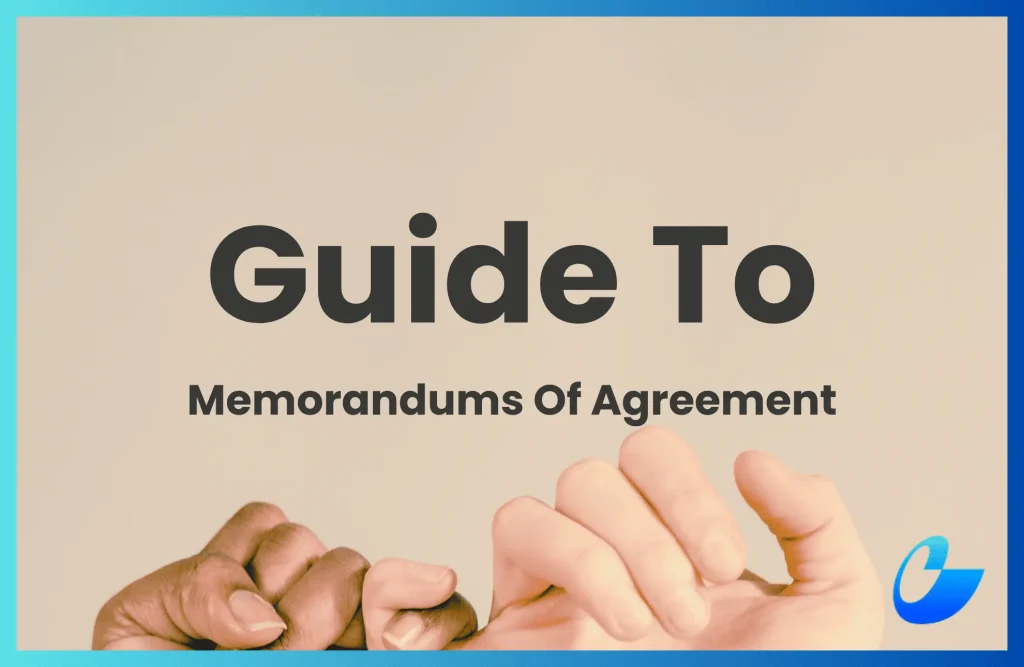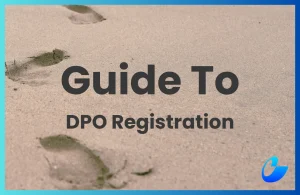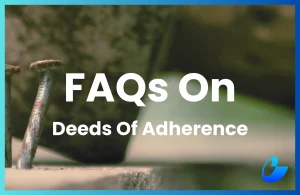A Memorandum of Agreement (MOA) is one of the earliest legally binding documents used to formalise business collaborations and set out specific obligations for each party.

However, as it is also basically a prelude to a contract, some wonder if it’s necessary at all.
As the answer is highly situational, this article will help you evaluate for yourself as we break down:
- what an MOA is
- when you should use one
- key terms to include, and
- how it differs from an MOU and contract
Let’s begin.
What is a Memorandum of Agreement?
A Memorandum of Agreement (MOA) is a formal contract that outlines specific roles, responsibilities, and deliverables each party agrees to perform, typically covering:
- the scope and objective of the collaboration
- each party’s obligations and contributions
- duration or timeline of the agreement, and
- remedies or consequences in case of breach
It is most often used when parties are ready to move forward with a binding commitment, but without needing a long-form or complex commercial contract.
When to use an MOA
An MOA is most appropriate when both parties are ready to formalise an arrangement that involves deliverables, milestones, payment terms, or performance standards, such as in the following scenarios:
| Use Case | How an MOA Helps |
| Pilot Projects | Sets out terms for a trial run, including brand use, performance metrics, and evaluation criteria. |
| Vendor / Distribution Arrangements | Defines service standards, delivery obligations, and pricing commitments for distributors or suppliers. |
| Joint Ventures | Outlines roles, profit-sharing, confidentiality, and exit clauses when co-developing a product or service. |
If the relationship involves money, deadlines, or deliverables, and both parties are ready to commit, an MOA is usually the practical alternative to a full contract.
Is an MOA legally binding in Malaysia?
Yes, an MOA is generally legally binding, as long as it contains the essential elements of a contract under Malaysian law:
- offer and acceptance
- intention to create legal relations
- consideration (e.g. payment or value exchanged)
- capacity to contract
Once signed, an MOA can be enforced in court if one party fails to fulfil its obligations.
Key MOA clauses
While content varies depending on the nature of the collaboration, most MOAs are drafted with the following eight essential clauses.
| Clause | Function |
| Purpose and Scope | Explains the objective of the collaboration and what the MOA covers. Helps manage expectations from the beginning. |
| Roles and Responsibilities | Specifies each party’s obligations, including deliverables, milestones, or resources to be provided. |
| Timeline and Duration | States the effective date and duration of the MOA. For project-based agreements, it clearly defines start and end dates. |
| Payment and Cost Allocation | Outlines financial contributions or profit-sharing arrangements, including who pays what, when, and how. |
| Confidentiality | Protects sensitive information exchanged during the course of the collaboration. |
| Intellectual Property (IP) Rights | Addresses ownership and usage rights of any IP developed during the collaboration, crucial in joint R&D or tech projects. |
| Termination and Exit | Describes how the agreement can be terminated (e.g. mutual consent, breach, or expiry) and how to handle outstanding obligations. |
| Governing Law | States that the MOA is governed by Malaysian law, especially important when one or more parties are based outside Malaysia. |
Mistakes and misconceptions
MOAs can go wrong when certain details are missed. Here are the areas where issues tend to arise:
- Vague obligations, e.g. “Party A shall provide support,” without specifying further.
- Missing key terms like payment schedule or IP ownership.
- Poorly defined exit terms whereby early withdrawal by a party can occur with no clear recourse.
- Confusing MOA with MOU and signing an MOA assuming it’s “non-binding”.
That last one has particularly serious consequences as an MOA creates enforceable commitments under Malaysian contract law.
How an MOA differs from an MOU
A key difference lies in intent and language.

A Memorandum of Understanding (MOU) usually states that the arrangement is not legally binding, often used for preliminary discussions or goodwill-based collaborations, while an MOA, by contrast, tends to:
- contain precise obligations
- set out deliverables and deadlines
- include clauses for breach, dispute resolution, and termination
- be signed with the intent to bind both parties legally
While both are used in business collaborations, they serve different purposes.
| Aspect | MOA | MOU |
| Binding Effect | Legally binding and enforceable | Usually non-binding (unless stated otherwise) |
| Purpose | To formalise obligations between parties | To express mutual intent to cooperate |
| Typical Use | When parties are ready to proceed with clear terms and deliverables | During early-stage discussions or relationship-building |
| Content | Specific obligations, roles, deadlines, payment terms, dispute clauses | General outlines, broad intentions, no detailed enforcement terms |
How an MOA differs from a Contract
Though essentially a type of contract that binds the parties involved, an MOA typically differs from a traditional commercial contract in terms of scope.
While contracts are often long-form, detailed, and cover every conceivable obligation and risk, an MOA is more concise and focused on defining key terms of a specific collaboration.
In practice, many parties choose an MOA when they:
- want a simpler document that still creates legal obligations
- feel that an MOU is too general or non-binding, but a formal contract is too heavy-handed
It strikes a balance between clarity and flexibility, giving the parties something enforceable without the full complexity of a contract.
Conclusion
Unlike an MOU, a Memorandum of Agreement (MOA) is a legally binding document that is simpler and less time-intensive than a full commercial contract.

It’s most ideal when parties are past early talks and ready to begin working together, but not quite ready for a full contract due to timing or project maturity.
If you are in need of help turning your business intentions into a clear, enforceable MOA, reach out to us for legal support tailored to your goals!










